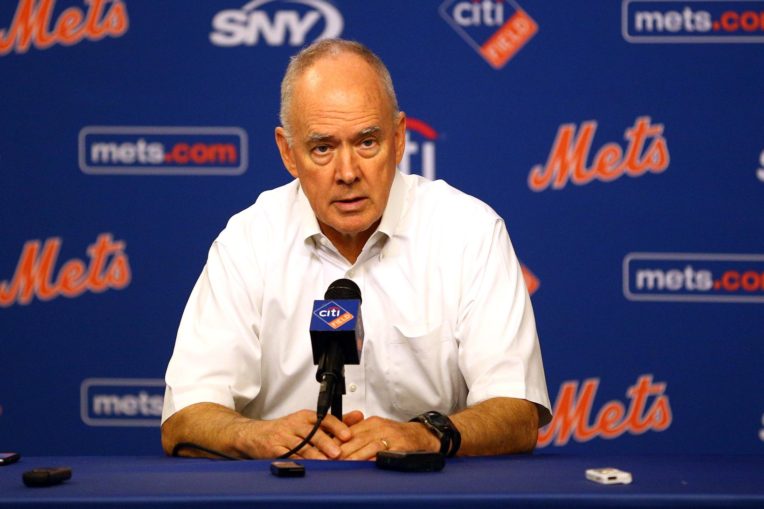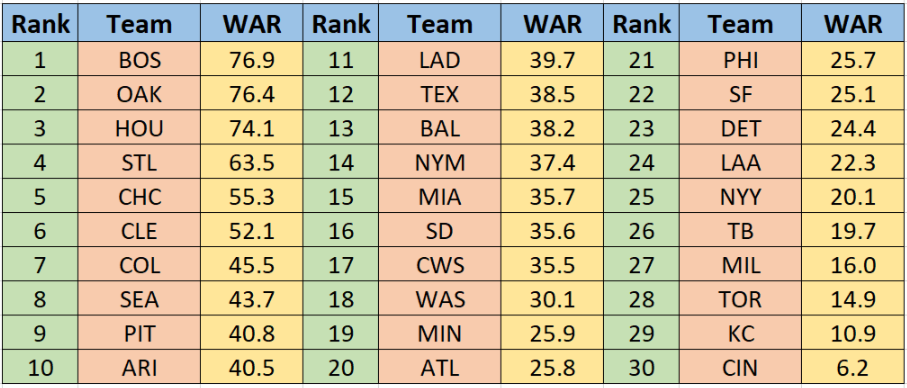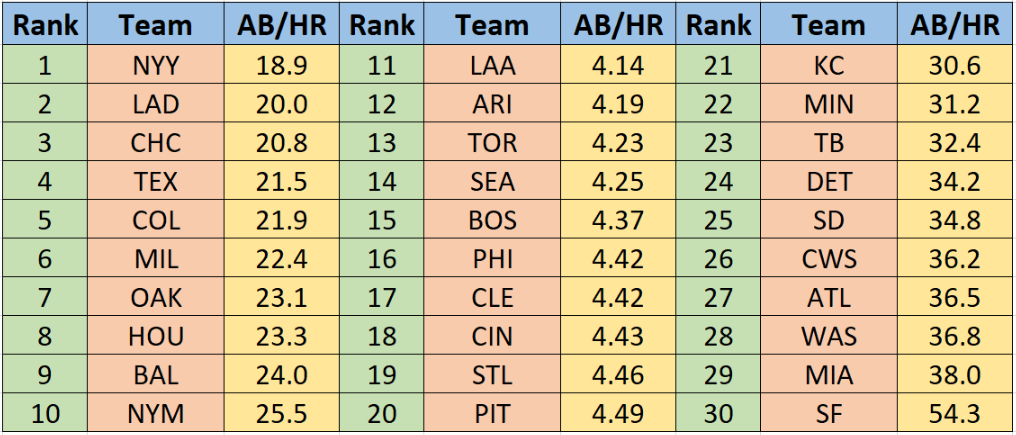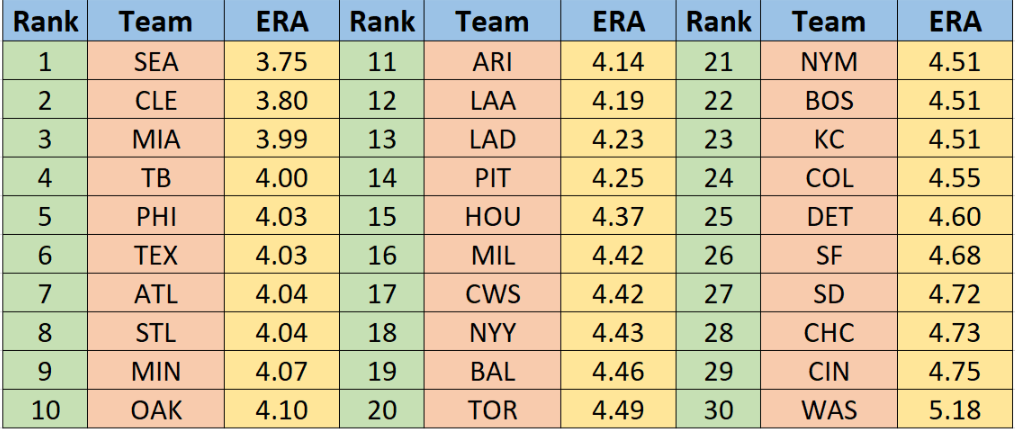
Over 173,000 plate appearances, 55,695 innings pitched, and 723 players – Those are just some numbers that describe the size of this massive project. With tremendous help from Jacob Resnick and Mojo Hill, we analyzed every MLB team’s draft from 2011-2018 to find out how well the Mets drafted under former General Manager Sandy Alderson.
We ranked each team in Baseball Reference’s Wins Above Replacement (bWAR), On Base Percentage (OBP), At-bats per home runs (AB/HR), and ERA.
Before we begin, here’s some things to remember when looking at the results.
- Teams won’t get credit for drafts picks that went unsigned.
- The numbers from all active players were collected from July 8 to July 11, so any games after the All-Star break are not included.
- Our OBP’s will be slightly lower than official calculations because sacrifice flies were not tracked.
- We understand that General Managers sometimes aren’t directly involved in making draft choices, especially in the late rounds. But the ultimate responsibility falls on the General Manager for how their draft performs.
- Even if a player was traded to another organization, their numbers count towards the original team that signed them. For example, Chris Paddack counts towards the Marlins’ totals, even though he was traded to the Padres. This analysis is only meant to evaluate drafts, not trades.
Now, let’s begin. We will start with Wins Above Replacement.

Michael Conforto (11.0 bWAR) and Michael Fulmer (9.3 ) lead Alderson’s drafts. The Mets also drafted players who are just starting to blossom like Pete Alonso (4.0) and Jeff McNeil (5.4)
If Alonso and McNeil continue to produce at a high level, it’s likely the Mets will pass several teams. For example, the Orioles are less than a win ahead of the Mets, and they do not have the elite talent to stave off the Mets’ All-Star duo for long. The Orioles two highest players in WAR are Kevin Gausman (10.2 ) and Zach Davies (7.3).
But it’s doubtful the Mets could ever catch the best drafts like the Red Sox (76.9), A’s (76.4), and Astros (74.1). Not only have they built a big lead, but it’s unlikely that their top performers like Mookie Betts (38.6), George Springer (21), and Matt Chapman (16) will be slowing down anytime soon.
Some may say the inclusion of Fulmer, the pitcher Alderson traded for Yoenis Cespedes, inflates the Mets’ WAR. But there’s no reason why Alderson shouldn’t get credit for a solid draft choice, especially when Fulmer provided the Mets with excellent value at the trade deadline in 2015.

The strategy of targeting patient hitters seems to have paid off for Alderson. While the Mets rank 13th in batting average, they are 6th in OBP. And if you look deeper into the numbers, the Mets on-base ability appears more impressive.
The second and third ranked teams in OBP, the Brewers and Reds, rank highly because of a small sample size. These teams did not accumulate more than 2,000 plate appearances, while the Mets’ hitters made 6,054 trips to the plate.
The Mets’ hitters are also arguably better than the second ranked OBP team, the Nationals. Their .345 OBP is driven by one player – Anthony Rendon. He accounts for more than half of Washington’s plate appearances, whereas the Mets .340 OBP is the product of multiple players like Brandon Nimmo, Michael Conforto, Pete Alonso and Jeff McNeil.
That would leave only the Dodgers and Cubs as the only teams better than the Mets in OBP. Their drafts include players like Cody Bellinger, Corey Seager, and Kris Bryant, so there’s no shame in ranking behind them.
But getting on base is only part of the story. Let’s examine how the Mets rank in the power department.

The powerful Aaron Judge carries the Yankees to the top spot in AB/HR. The Cubs and Dodgers rank inside the top five once again, while the Rangers with Joey Gallo, and the Rockies with Trevor Story round out the top five.
Riding the strength of Pete Alonso, the Mets surged into the top ten. The Home Run Derby Champion averages a home run in every 11 trips to the plate, so the Mets will climb further up this list if Alonso continues his phenomenal pace.
The Mets top ten ranking in both AB/HR and OBP shows that Alderson succeeded in his goal of drafting impact hitters. In each of his first five drafts, the Mets selected a position player with their first pick.
While not all these picks, like Gavin Cecchini (-0.7 WAR) or Desmond Lindsay (currently in High-A) have produced, Alderson’s focus on offense resulted in an excellent hitting class.
But it’s caused the pitching to suffer. Let’s look at ERA.

It’s understandable that the Mets wouldn’t have focused as much on pitching in the draft under Alderson. Remember that he traded for Zack Wheeler and Noah Syndergaard, and he inherited Matt Harvey, Jacob deGrom, and Steven Matz. There was also Rafael Montero, who was once thought of as a top 100 prospect.
But there’s a reason why the cliché that “you can never have enough pitching” holds true. Despite their collection of power arms, the Mets now lack quality pitching depth. While Alderson’s successor, Brodie Van Wagenen, hasn’t helped, the root cause of this problem can be traced back to Alderson’s drafts.
Out of all the starters drafted, only Fulmer produced a WAR above one. And the only relievers that produced a WAR above one are Seth Lugo (5.2 bWAR) and John Gant (1.8 bWAR). Alderson traded Gant in 2015 for Kelly Johnson and Juan Uribe.
While Alderson’s drafts aren’t the only reason behind the team’s pitching woes, it helps explain why the Mets have struggled so much to find injury replacements for their starters and quality arms for their bullpen.
In each of the past three seasons, their bullpen has ranked in the bottom five in ERA. Selecting better pitchers in the draft would have helped tremendously in this area.
Final Thoughts
This project contains mixed results for Alderson. His hitters rank inside the top ten, but his pitchers slip into the bottom third. He also drafted the second most MLB players with 34, but 18 of those players posted negative WAR’s.
As the numbers currently stand, his drafts appear average with a 14th place rank in WAR. But Alderson’s drafts have two major positives going its way: Alonso and McNeil. They will significantly help the Mets’ rankings as they accumulate more at-bats.
Alderson’s drafts may also improve (or decline) depending on how well his last 2-3 drafts perform. Some of Alderson’s highest draft picks have yet to play in the majors, like Anthony Kay, and of course, Jarred Kelenic and Justin Dunn – The prospects Van Wagenen traded in the Robinson Cano/Edwin Diaz deal.
Despite negatives on the pitching side, Alderson drafted a solid group of players. It doesn’t stack up as an elite class (at least not yet), but it certainly isn’t poor either. While Van Wagenen failed to build around the Mets’ core this year, hopefully the Mets can successfully supplement players like Alonso, McNeil, and Conforto in future seasons.
If you are interested in seeing all the numbers we collected, visit the Google Doc Spreadsheet that we used.















